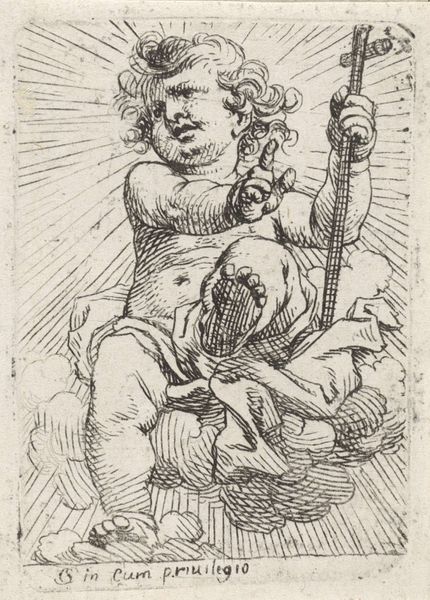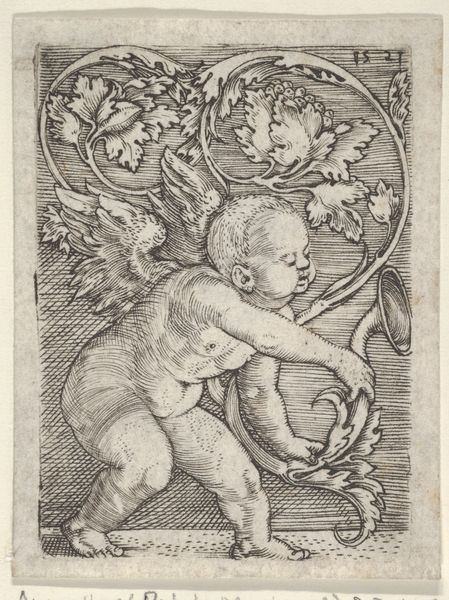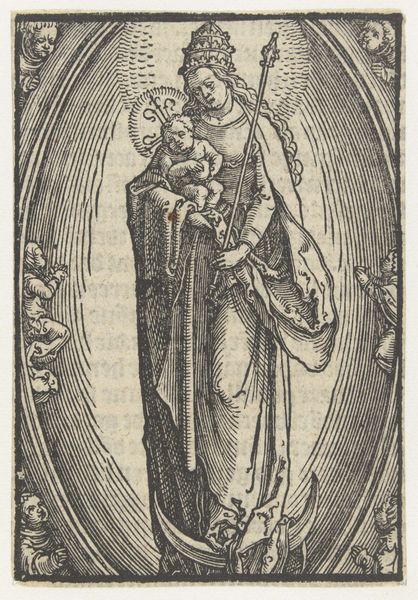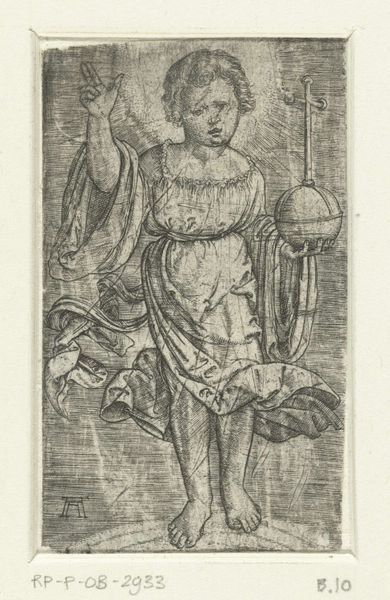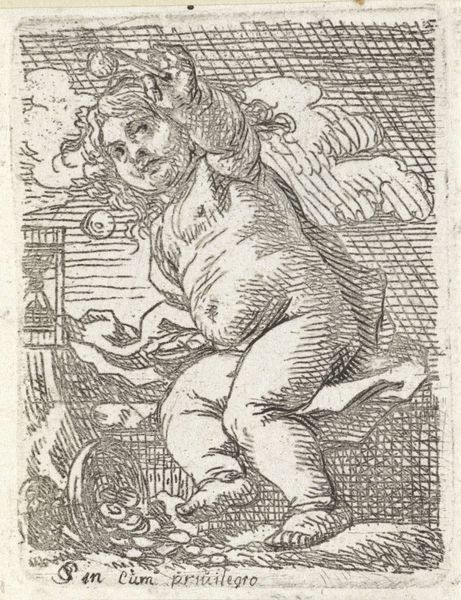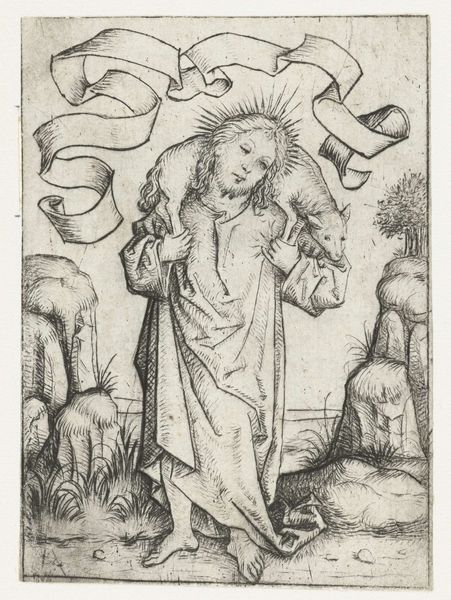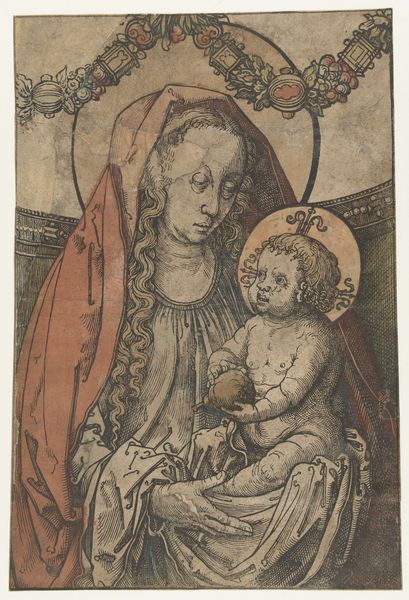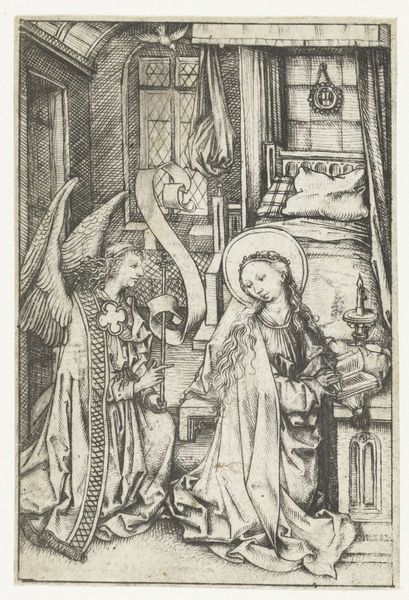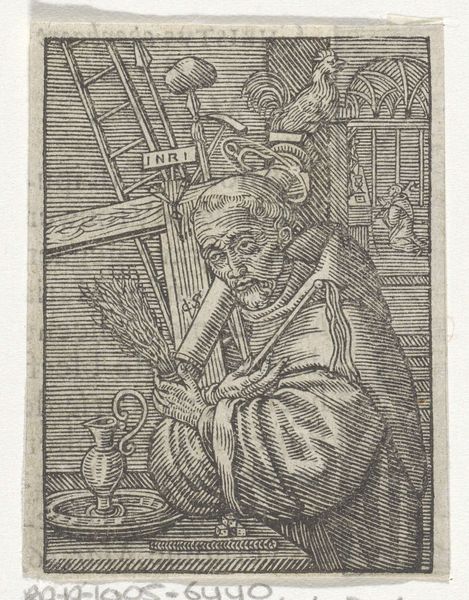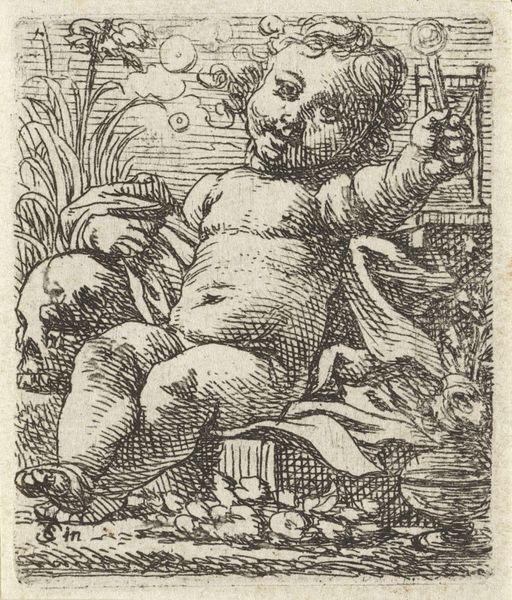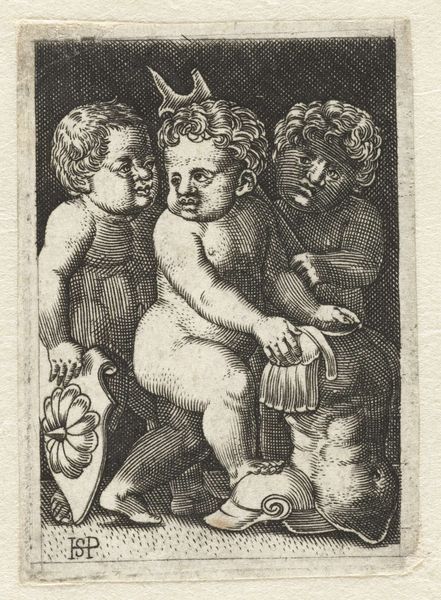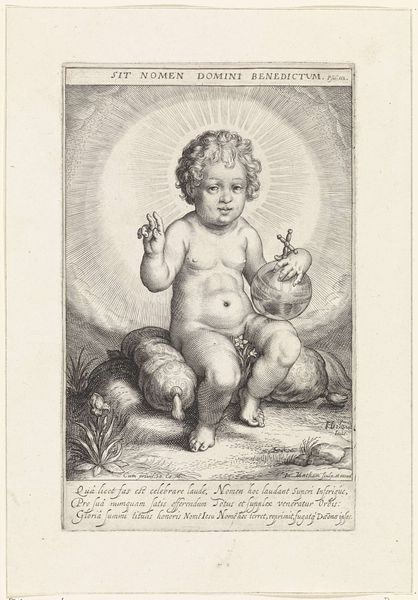
drawing, ink, engraving
#
portrait
#
drawing
#
pen drawing
#
pen illustration
#
pen sketch
#
pencil sketch
#
figuration
#
11_renaissance
#
ink
#
history-painting
#
northern-renaissance
#
engraving
#
miniature
Dimensions: height 163 mm, width 33 mm
Copyright: Rijks Museum: Open Domain
Editor: So, here we have "The Blessing Christ Child" by the Master of the Amsterdam Cabinet, made sometime between 1488 and 1492. It’s an engraving, very detailed despite its small scale. There's this immediate contrast between the baby Jesus and... a skull at the bottom. It’s a bit unsettling, honestly. What do you see when you look at this, especially considering that contrast? Curator: Ah, yes, unsettling indeed! But let's not shy away from that discomfort. It's a very clever piece. You see the Christ Child, so full of life, rendered with this delicate line work. He's holding what looks like an orb, symbolizing his dominion. And that skull...well, it's a memento mori, a reminder of our mortality. That contrast isn't a flaw, but a feature! Think of it, Editor, as a visual poem about redemption, life triumphing over death. What do you make of the INRI at the top? Editor: That makes the piece less cute, more of a symbol. And oh, I didn’t even notice, it’s so tiny, that’s ‘Jesus of Nazareth, King of the Jews’, right? Curator: Precisely! This isn’t just some sweet baby picture; it’s a potent declaration of Christ's sacrifice and ultimate victory. That little orb He clutches – it represents a kingdom beyond earthly demise, a promise whispered against the stark reality of that skull. Is it miniature? Yes. Is it monumental in its message? Absolutely. It’s interesting to imagine who was its audience. Was it for individual contemplation and private devotion? How different is our own perception now? Editor: I guess I was so focused on the visual contradiction I missed the deeper point! Seeing it as this message about redemption makes a big difference. Curator: Exactly! That friction, that initial unease – that's often where the real magic happens. I bet there’s an argument to be made that pieces from this time function completely differently today. They still evoke curiosity but were designed to generate strong sentiments such as awe. What we appreciate as aesthetics, they conceived to generate pathos. Editor: Definitely food for thought. I'll be looking at art with new eyes. Curator: My dear editor, art is a journey of the senses. One must approach an art encounter with awareness. Just ask more questions and look at the shadows for answers!
Comments
No comments
Be the first to comment and join the conversation on the ultimate creative platform.
